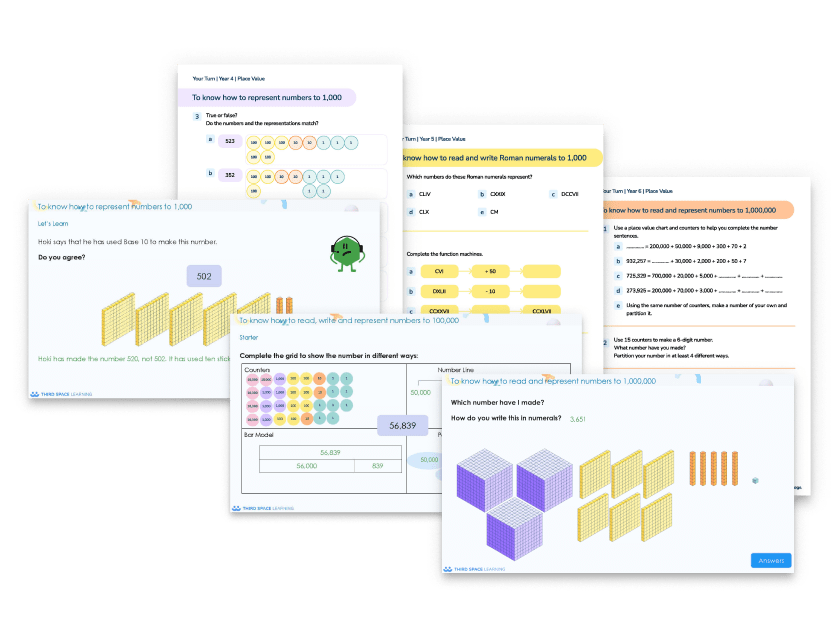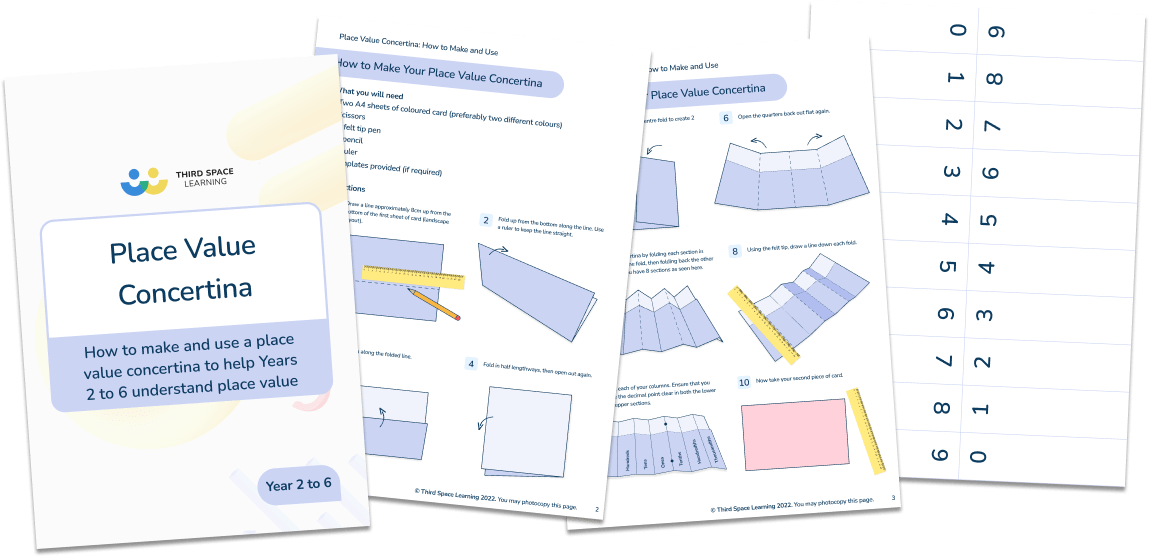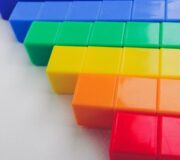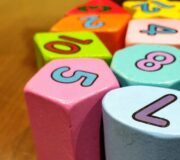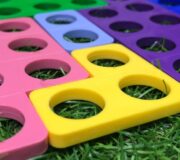The Best Place Value Grid Ever: Your Free Printable Place Value Concertina For KS1 and KS2
A place value grid (also called a place value chart) is an essential part of any primary school teacher’s toolkit. Place value underpins so much of what children learn in maths, and having a simple place value grid to help them grasp these concepts is invaluable.
But finding a value grid to use and reuse can be difficult.
Not any more!
Our printable place value grid is exactly the sort of simple, easy to recreate resource that’s brilliant to have in your back pocket ready for the start of the school year. This guide covers everything you need to know about place value charts and grids, plus gives you our tried-and-tested concertina resource that transforms how pupils understand place value.
While the terms “place value chart” and “place value grid” are often used interchangeably in classrooms, both refer to essential tools for teaching how our number system works.
Place Value Concertina
Your fun, never-fail resource designed to banish the misconception 'to multiply a number by 10, add 0'
Download Free Now!What is a place value chart?
A place value chart is a visual tool for understanding the value of digits in a number based on their position, with columns representing different powers of ten, such as ones, tens, hundreds, and beyond the decimal point to tenths, hundredths, and so on. It helps with reading, writing, comparing, and calculating with numbers, providing a foundational understanding for more complex maths concepts.
Place value charts typically serve as reference displays or teaching aids that show pupils how our number system is organized. Teachers often use these charts to demonstrate concepts to the whole class or display them on classroom walls as visual reminders.
Place value chart examples
KS1 place value chart: In Year 1, pupils begin to learn how to count, read, and write numbers up to 100. A KS1 place value chart focuses on tens and ones columns, helping children understand that the digit 4 in the number 47 represents 4 tens, while the digit 7 represents 7 ones.
KS2 place value chart: By Year 6, pupils work with much larger numbers and decimals. A KS2 place value chart extends from millions on the left through to thousandths on the right, showing how each position represents a different value. This chart helps students understand that in the number 3,456.78, the 3 represents 3 thousands, the 4 represents 4 hundreds, and so on.
What is a place value grid?
A place value grid is a working tool where students can physically place and manipulate numbers to understand digit value and practice mathematical operations like multiplication and division by 10, 100, and 1000. The grid provides a hands-on workspace for students to explore how moving digits between columns changes their value.
Place value grids function as interactive learning spaces where pupils can use number cards, counters, or written digits to build numbers and see how mathematical operations affect digit positions. This makes the grid particularly valuable for embedding understanding through physical manipulation.
Place value grid examples
KS1 place value grid: Young learners use simplified grids with tens and ones columns to practice building two-digit numbers. For example, pupils might use counters to show that 23 means 2 groups of ten and 3 individual ones.

KS2 place value grid: Older pupils work with grids extending to ten thousands, hundred thousands, and decimal places. They use these grids to practice multiplying and dividing by powers of ten, clearly seeing how digits move between columns rather than simply “adding zeros.”

When to use place value charts vs. place value grids
While these terms are often used interchangeably, understanding their subtle differences can help you choose the right tool for different teaching situations:
Use place value charts when:
- Introducing new concepts to the whole class
- Providing visual reference during lessons
- Displaying number system structure permanently in your classroom
- Supporting pupils who need visual reminders of column values
Use place value grids when:
- Pupils need hands-on practice with number manipulation
- Teaching multiplication and division by 10, 100, 1000
- Working with small groups or individual pupils
- Pupils need to physically move digits to understand concepts
Many teachers find that starting with a chart for explanation, then moving to a grid for practice, gives pupils the best of both approaches.
How to use a place value chart
The process of using a place value chart involves three key steps that help pupils understand the value of each digit in any number:
1. Identify the columns
The chart has columns for different place values, starting with the ones place, then moving left for tens, hundreds, thousands, and so on, and to the right for tenths, hundredths, and further decimal places. Each column represents a different power of ten.
2. Place the digits
Write the number into the chart, placing each digit in its corresponding column. This helps pupils see exactly where each digit belongs and prevents common mistakes like misaligning columns.
3. Determine the value
The value of a digit is determined by multiplying the digit by its place value. For example, in the number 653:
- The digit 6 is in the hundreds place, so its value is 600 (6 x 100)
- The digit 5 is in the tens place, so its value is 50 (5 x 10)
- The digit 3 is in the ones place, so its value is 3 (3 x 1)
This systematic approach helps pupils understand that the same digit can have different values depending on its position within a number.

Benefits of using place value charts and grids
The beauty of place value charts and grids is their versatility across the primary curriculum for KS2 maths. These resources support understanding in multiple ways:
- Foundation for all number work: Place value understanding underpins addition, subtraction, multiplication, and division. Without solid place value knowledge, pupils struggle with more complex calculations.
- Visual learning support: These tools help pupils see abstract concepts. The grid shows students exactly where each digit belongs and what value it represents in each column.
- Misconception prevention: Using charts and grids correctly prevents common errors like thinking “add a zero” when multiplying by 10.
- Flexible application: From Year 1 counting to Year 6 decimal work, the same basic tool adapts to support learning across all year groups.
- Assessment tool: Teachers can quickly see which pupils understand place value concepts by observing how they use these resources.
Put an end to place value misconceptions
One of the most persistent misconceptions in primary maths is the belief that “to multiply a number by 10, you just need to add a 0 to the end of a number.”
This concept seems to work with whole numbers – multiply 29 by 10 and you get 290. But this thinking becomes completely wrong when decimals enter the picture. What happens when you multiply 2.9 by 10? The answer is definitely not 2.90!
Place value charts and grids provide the perfect solution to this misconception. When pupils physically move the digits 2 and 9 one column to the left on their grid, they see that 2.9 becomes 29.0, or simply 29. The digits move position; we don’t add zeros.
Other common place value mistakes that charts and grids help address include:
- Confusing the value of a digit with the digit itself
- Misaligning columns when writing large numbers
- Not understanding why we need zero as a placeholder
- Struggling to compare numbers with different amounts of digits
Using visual tools like place value grids helps pupils see these concepts clearly, preventing misconceptions from taking root.

Unlimited primary maths tutoring with Skye, the voice-based AI maths tutor.
Built on the same principles, pedagogy and curriculum as our traditional tutoring, but with more flexibility, reach and lower cost.
Join the schools already helping hundreds of primary pupils nationwide with Skye’s one to one maths tutoring.
Watch Skye in actionCross-curricular connections
If you’re teaching place value at KS2 to pupils for the first time, getting grips with ordering numbers and partitioning, for example or trying to correct the misconception ready for teaching multiplication/division by 10, you’ll need a simple, tried and tested way to explain it so it sticks and your pupils don’t make the same mistake again.
While dienes and other standard maths curriculum resources can be useful for understanding place value for different numbers in isolation or for addition and subtraction, more complex operations need something else.
Strong place value understanding supports learning across the entire maths curriculum:
- Fractions and decimals: Understanding that 0.5 represents five tenths becomes much clearer when pupils can see the tenths column on their grid.
- Measurement: Converting between units (like metres to centimetres) relies on place value knowledge and understanding of multiplying by powers of ten.
- Money calculations: Pounds and pence follow the same place value principles as whole numbers and decimals.
- Data handling: Reading scales, interpreting graphs, and understanding large numbers all require solid place value foundations.
- Problem solving: Many word problems involve large numbers or decimals that pupils need to interpret correctly using place value knowledge.
The best place value resource ever – the place value concertina
As a teacher, you already know how important place value charts and grids are in your teaching, but did you know there was a way to turbo charge their effectiveness?
Here’s how: turn your simple place value grid into a place value concertina.
Our place value concertina combines the benefits of both charts and grids while adding a crucial element – physical manipulation that makes abstract concepts concrete. This isn’t just another place value resource; it’s a game-changing tool that eliminates the “add a zero” misconception once and for all.
All it takes is some coloured card, pens and a pair of scissors to create this place value activity. You won’t need more than this, but mini whiteboards may help any pupils who wish to do any rough working out.
Within ten minutes you can have a foolproof tool for showing pupils how to move numbers to the left or right along the number line when teaching place value. This grid resource is so simple you can even get your pupils to make it with you!
Teachers love this free resource because it’s so easy to print and use in any classroom setting.

How to make your place value concertina
All the instructions you need are in this free printable resource: Best free place value grid: the place value concertina.
If you can’t wait to get started, here’s a summary of how to make your place value grid.
What you will need
- Two A4 sheets of coloured card (preferably two different colours)
- Scissors
- A felt tip pen
- A pencil
- A ruler
- Templates provided (if required)
Step-by-step instructions
- Create the base grid: Draw a line approximately 8cm up from the bottom of the first sheet of card (landscape layout). Fold up from the bottom along the line, using a ruler to keep the line straight.
- Create the columns: Fold in half lengthways, then open out again. Fold each half in to the centre fold to create 2 further folds. Open the quarters back out flat again.
- Make the concertina: Create a concertina by folding each section in half towards the fold, then folding back the other way – until you have 8 sections. Using the felt tip, draw a line down each fold.
- Label the columns: Label each of your columns: Ten Thousands, Thousands, Hundreds, Tens, Ones, Tenths, Hundredths, Thousandths. Ensure that you make the decimal point clear in both the lower and upper sections.
- Create number strips: Take your second piece of card. Fold in half lengthways. Using a ruler, draw a line across the centre of the page, then draw lines across the width of the card to create 10 columns (20 sections in total). Write the digits 0-9 on each set of 10, ensuring the digits are written at the top of each strip.
- Cut and organize: Cut out each of the sections to create all of your number strips. Collect all strips and put them into number order.
The concertinas take a short time to make and can be easily folded up to store in folders or drawers so they are always on hand when you need them. You can keep a class set or the children can decorate their own on the back to personalise them.
How to use your place value grid or place value concertina
Once you’ve made your place value concertina, simply ask students to make a number. In the example below we have made 369.

Multiply by 10 using your place value grid
Ask pupils to multiply by ten by moving the numbers one column each to the left. They will also need to add a zero as the place holder for the ones column. Not for nothing did my class always call it Zero the Hero!
This grid shows pupils exactly how the value of each digit changes when we multiply by 10. The grid demonstrates that we’re not adding zeros – we’re moving digits to different positions where they represent different values along the number line.

Divide by 10 using your place value grid
If you want to divide 369 by 10 then you simply move the numbers one column each to the right. Pupils are quick to pick up the idea and process of physically moving the digits. This embeds the concept for them correctly, helping them to move on to bigger numbers and more complex concepts.
On a place value grid, not only is it clear that this is the answer, children can further see that 9 is now in the tens place. The grid shows how each digit has moved to a different position with a different value.
You can also move on to multiplying by 100, moving two columns left and needing two zeros, and so on. The value grid makes it easy to check your working and supports pupils in understanding large numbers and division concepts.

You can also move on to multiplying by 100, moving two columns left and needing two zeros and so on.
Differentiation tips for different year groups
The beauty of the place value concertina is its adaptability across year groups:
KS1 differentiation (Years 1-2)
- Use only 4 columns: tens, ones, and basic decimal places
- Focus on numbers up to 100
- Use concrete materials alongside the grid (counters, base ten blocks)
- Concentrate on building numbers rather than complex operations
Lower KS2 differentiation (Years 3-4)
- Introduce hundreds and thousands columns
- Practice with 3 and 4-digit numbers
- Begin simple multiplication and division by 10
- Use the grid to support column addition and subtraction
Upper KS2 differentiation (Years 5-6)
- Use the full grid including ten thousands, hundred thousands
- Introduce decimal places systematically
- Focus on multiplication and division by 10, 100, 1000
- Use for complex problem-solving involving large numbers and decimals
Supporting pupils with SEND
- Start with fewer columns and build up gradually
- Use high-contrast colours for better visibility
- Provide verbal explanations alongside visual manipulation
- Allow extra time for processing and manipulation
Teachers can easily adapt this resource by only making 4 columns (with no decimal places) if using in Key Stage 1 or change the column names as needed for specific lessons.
Place value activities using your concertina
My pupils have always loved this place value concertina resource and we play activities such as word problems and maths games with them including me calling out clues for a number and them adding the right digits into the columns to show the answer. These activities boost pupils’ problem-solving skills and confidence with place value.
Activity ideas using your place value grid
- Number riddles: “I am a three-digit number. My tens digit is 6 less than my ones digit and 1 less than my hundreds digit. If you multiply me by 7, the estimated product is 1,400. What number am I?” (For more challenging ones, I might ask them to work in pairs or groups).
- Partner building: Ask children to each make a number (you may want to specify, for example, a 3-digit or 2-digit number or a number with 1 decimal place) in their concertina. They can then show their number to a partner and together try adding/subtracting one number from the other. This will help to reinforce place value in addition and subtraction.
- Number line activities: Use the grid to help pupils understand how numbers relate to each other along a number line, particularly when working with large numbers.
- Operation practice: Give pupils a starting number and ask them to multiply or divide by 10, 100, or 1000 using their concertina. This makes the movement of digits concrete and visible.
Place value concrete resources
Consider using concrete resources and maths manipulatives to develop your pupils’ number sense and understanding of place value. Take a look at our free guide to hands on manipulatives to use in the classroom when teaching place value.
Here are a list of place value concrete resources and manipulatives to consider using:
- Numicon
- Place value counters
- Place value mats
- Place value arrow cards
These resources work alongside your place value grid to give pupils multiple ways to learn and practice. The grid provides excellent support when used with these concrete materials, helping children understand the concept more deeply.
Teachers often find that combining the grid with arrow cards works particularly well in the classroom. You can print these resources from our website to create more resources for your school.
Take a look at our free place value worksheets for each year group to print and use straight away. Each worksheet reinforces the concepts taught using the place value grid.
I hope you find this place value grid useful. This free resource has not only worked brilliantly for me during the many years of my own teaching career, but it was created and passed down to me by my own teacher (now retired). So thank you very much Mr Bell from Hangleton Junior School – we all owe you one!
A place value grid is a grid where pupils can manipulate numbers to understand how digit positions affect their values. Students use grids to practice operations like multiplying and dividing by 10, 100, and 1000.
A standard place value chart is a visual tool that shows where each digit belongs in a number and what value it represents. The chart demonstrates how our number system works by organizing digits into columns representing different powers of ten.
A place value chart is used by identifying the columns, placing digits in their correct positions, and determining each digit’s value based on its position. This systematic approach helps pupils understand that digit value depends on position within the number.
To multiply using a place value grid, move the numbers to the left. The number of columns to move depends on the multiplier. For example, when multiplying by 10, move each digit one column to the left. Remember to add zeros as place holders for any empty columns.
Use place value charts for whole-class teaching and as visual references. Use place value grids when pupils need hands-on practice manipulating numbers and understanding how operations affect digit positions.
Read more
- How To Teach Place Value in Year 5 and 6 For Small Group KS2 Interventions
- 10 Simple and Effective Place Value Games for KS1 and KS2
- Guide to Place Value Learning Objectives in the KS1 and KS2 National Curriculum
- For Year 5 and Year 6: 75 SATs style questions on Place Value, Fractions, Addition and Subtraction
- What is Place Value? Explained for Primary School
DO YOU HAVE STUDENTS WHO NEED MORE SUPPORT IN MATHS?
Skye – our AI maths tutor built by teachers – gives students personalised one-to-one lessons that address learning gaps and build confidence.
Since 2013 we’ve taught over 2 million hours of maths lessons to more than 170,000 students to help them become fluent, able mathematicians.
Explore our AI maths tutoring or find out about a primary school maths tutor for your school.
